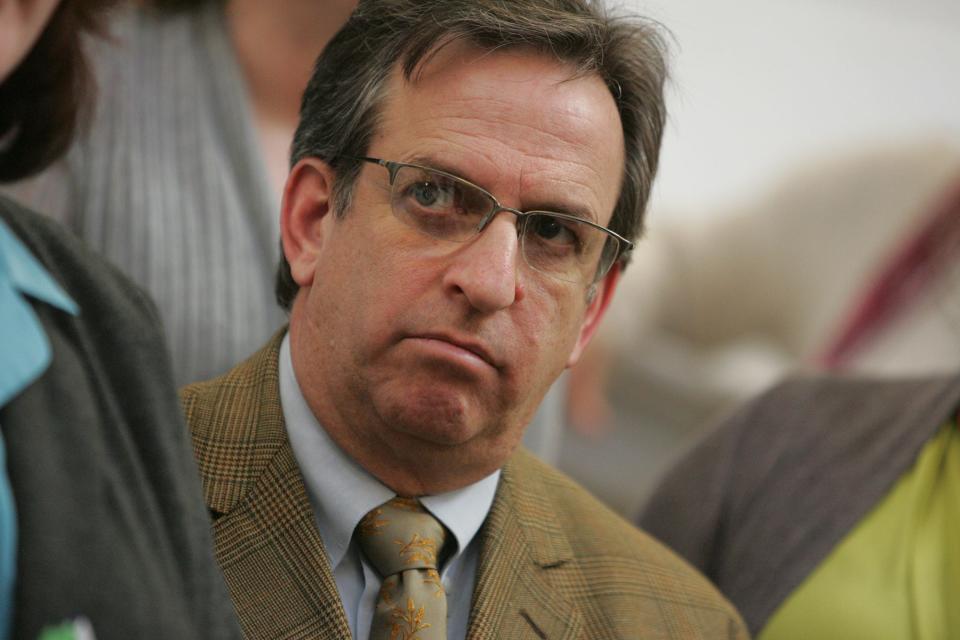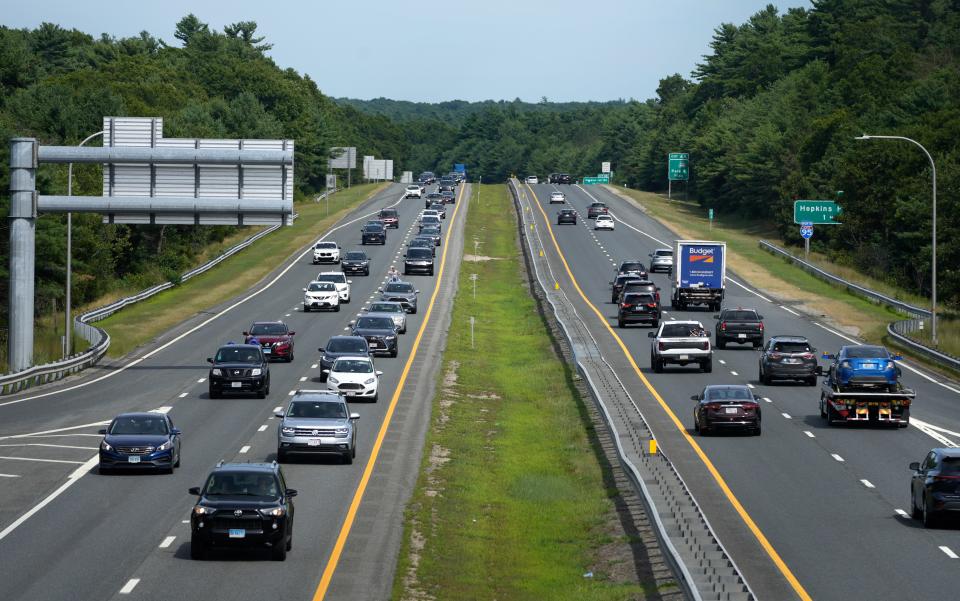Pollinators are in trouble. Could ending roadside mowing of RI highways make a difference?
For decades, the image of a well-maintained highway has been well-mowed grassy stretches on either side of the road.
It’s a clean-cut, simple-to-execute look that has matched the fashion of most American lawns.
But now there's a group of people beginning to picture something else: ending the mowing and letting native plants grow, perhaps to unruly heights, as a habitat for pollinators such as bees.
“It was brought to my attention by beekeepers in my neighborhood,” said Sen. Joshua Miller, D-Cranston, who filed a bill this session to authorize the state Department of Transportation to grow native plants along the 1,100 miles of state-managed roadways. There is a matching bill in the House.
“It’s a common-sense approach,” he said. “There’s not enough vegetation that supports pollinators. This would be a natural progression. You save money by – instead of mowing – growing pollinator-friendly plants.”

Why are pollinator-friendly landscapes needed?
Pollinators are in crisis. A recent University of Rhode Island study of bumble bees found only seven of the 12 bumble-bee species native to Rhode Island. One species they did find, Bombus fervidus, is likely to go extinct if something isn’t done in the next 50 years to stop the loss.
“The loss of all of the pollination that five species of bumble bees used to provide is a huge loss to both wildflowers and cultivated crops,” URI Prof. Steven Alm wrote in an email. “There are approximately 250 species of wild bees in RI. We don't know how many of these smaller bees have been lost.”
Lack of habitat and exposure to pesticides, pathogens and impacts of climate change are all reasons for the decline, according to Jennifer Hopwood, an entomologist with the Xerces Society.
As a wind-pollinated plant, grass – and particularly mowed grass – essentially equates to a lack of habitat for most pollinators.
“The consistently mowed grasses are basically not useful at all to pollinators,” said Prof. Rebecca Brown, the chairperson of plant sciences and entomology at URI who has studied native planting along roadways and worked with the Department of Transportation for years.

Native plants for your own garden: Once considered weeds, these 7 plants are garden beauties – and good for the ecosystem
But a roadside that was planted with natives – plants such as red clover, foxglove beardtongue, yellow wild indigo, cow vetch, sweet pea and bull thistle – would make “particularly good habitat for ground-nesting bees,” Brown said.
These patches would need to be allowed to go through their full life cycle, Brown said, in order to set seed and give the pollinators the full benefit. In order to keep the brush and trees from taking over the habitat, mowing would still need to be done about once a year, she said.
What difference will the bill make?
Here’s the catch to this bill: The Department of Transportation is already empowered to plant native plants on the roadsides.
This isn’t a new concept. Brown said URI professors have been recommending it since the 1980s.
“There’s nothing in the current specs that doesn’t allow them to plant pollinator plantings,” Brown said. “One of the issues we have in Rhode Island is that there is a vocal portion of the public – I have no idea if it's a majority or a minority – that wants the roadside to have a trim, mowed appearance and that vocal part of the population will call up the head of DOT, will call up the governor's office and complain when they perceive that the roadside looks weedy.”
Coming to RI?: Rhode Island could ban gas-powered lawn equipment by 2028. Landscapers aren't happy.
Miller said he knew that the DOT already had the power to plant pollinator plantings when he filed the bill and considered the legislation an incentive.
As a researcher who has worked with the DOT, Brown says the biggest obstacle to making the plantings a reality is public perception. It’s a question of whether you can get people on board with state roads having a different look.

Have other states done this?
Iowa, New Jersey and North Carolina have passed roadside planting legislation. New Jersey allows only the use of native plants, while North Carolina has a slightly softer approach of giving natives preference.
Iowa has the longest-running program of the three. Since 1987, when it passed its Integrated Roadside Vegetation Management bill, Hopwood said the state has transformed more than 100,000 acres of its nearly 600,000 acres of state and county roadsides into native habitat.
Solar farms are destroying forests: Can RI meet clean energy goals and still protect land?
What are the next steps in Rhode Island?
Whether or not the bills pass – both have been held in committee for further study – Brown said two things need to happen if Rhode Island is to move further in this direction.
One is logistical. There isn’t a good seed blend for this purpose right now in Rhode Island, she said, as most of the blends are designed for the mid-Atlantic, which is not what pollinators are looking for here.
Give up your gas car?: What to know as RI moves to phase out sales of gas-powered vehicles
“We’re looking at trying to put together a mix for DOT use that actually contains species that are native here in southern New England,” she said.
The second goes back to public opinion.
“The other thing," Brown said, "is the more people who reach out to DOT and ask for greater diversity or leave favorable comments, for instance, when things have been allowed to grow without being mowed, that’ll counteract the complaints.”
This article originally appeared on The Providence Journal: RI bill would change roadside management to help bees, pollinators

